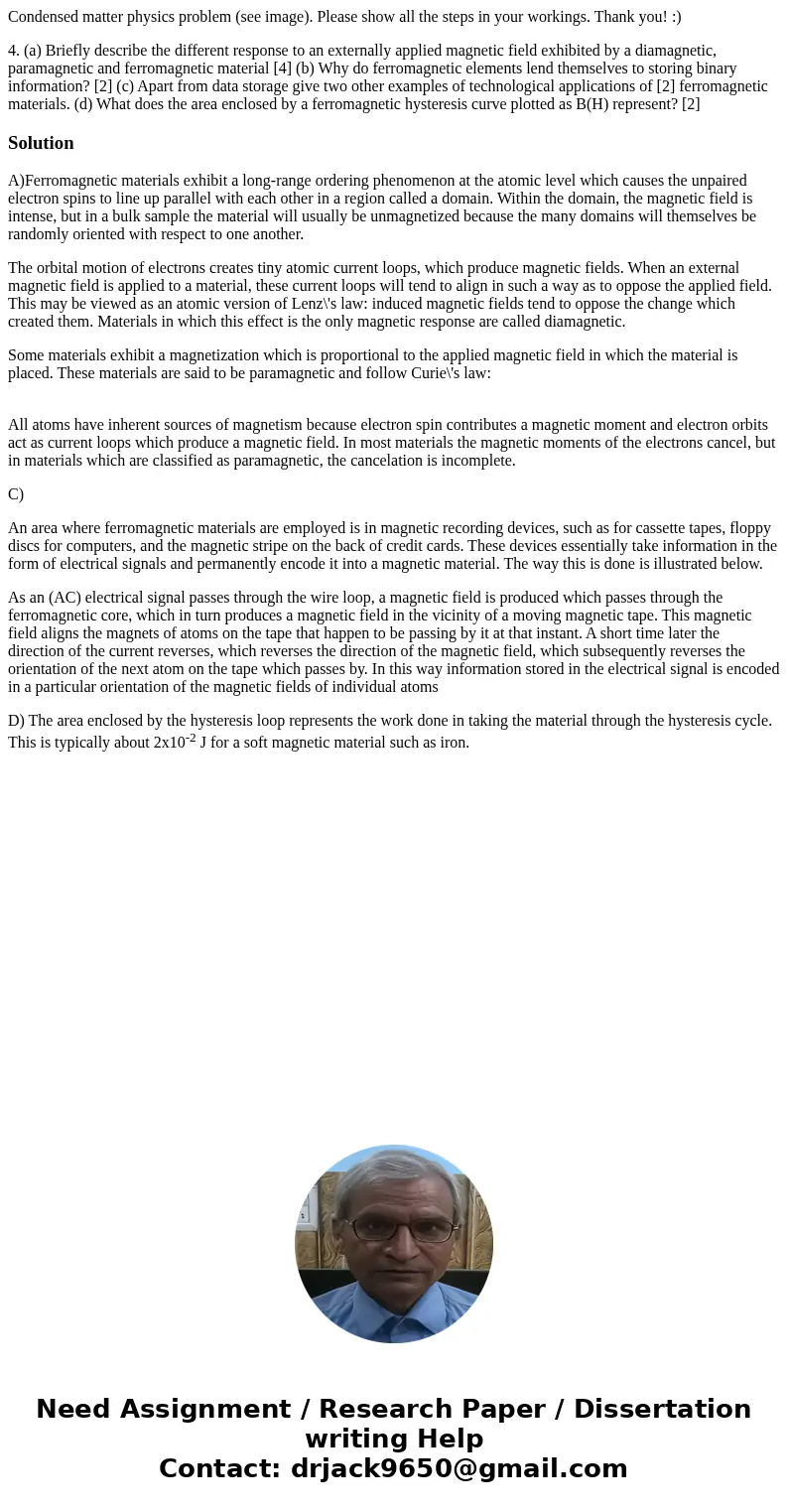Condensed matter physics problem see image Please show all t
Condensed matter physics problem (see image). Please show all the steps in your workings. Thank you! :)
4. (a) Briefly describe the different response to an externally applied magnetic field exhibited by a diamagnetic, paramagnetic and ferromagnetic material [4] (b) Why do ferromagnetic elements lend themselves to storing binary information? [2] (c) Apart from data storage give two other examples of technological applications of [2] ferromagnetic materials. (d) What does the area enclosed by a ferromagnetic hysteresis curve plotted as B(H) represent? [2]Solution
A)Ferromagnetic materials exhibit a long-range ordering phenomenon at the atomic level which causes the unpaired electron spins to line up parallel with each other in a region called a domain. Within the domain, the magnetic field is intense, but in a bulk sample the material will usually be unmagnetized because the many domains will themselves be randomly oriented with respect to one another.
The orbital motion of electrons creates tiny atomic current loops, which produce magnetic fields. When an external magnetic field is applied to a material, these current loops will tend to align in such a way as to oppose the applied field. This may be viewed as an atomic version of Lenz\'s law: induced magnetic fields tend to oppose the change which created them. Materials in which this effect is the only magnetic response are called diamagnetic.
Some materials exhibit a magnetization which is proportional to the applied magnetic field in which the material is placed. These materials are said to be paramagnetic and follow Curie\'s law:
All atoms have inherent sources of magnetism because electron spin contributes a magnetic moment and electron orbits act as current loops which produce a magnetic field. In most materials the magnetic moments of the electrons cancel, but in materials which are classified as paramagnetic, the cancelation is incomplete.
C)
An area where ferromagnetic materials are employed is in magnetic recording devices, such as for cassette tapes, floppy discs for computers, and the magnetic stripe on the back of credit cards. These devices essentially take information in the form of electrical signals and permanently encode it into a magnetic material. The way this is done is illustrated below.
As an (AC) electrical signal passes through the wire loop, a magnetic field is produced which passes through the ferromagnetic core, which in turn produces a magnetic field in the vicinity of a moving magnetic tape. This magnetic field aligns the magnets of atoms on the tape that happen to be passing by it at that instant. A short time later the direction of the current reverses, which reverses the direction of the magnetic field, which subsequently reverses the orientation of the next atom on the tape which passes by. In this way information stored in the electrical signal is encoded in a particular orientation of the magnetic fields of individual atoms
D) The area enclosed by the hysteresis loop represents the work done in taking the material through the hysteresis cycle. This is typically about 2x10-2 J for a soft magnetic material such as iron.

 Homework Sourse
Homework Sourse